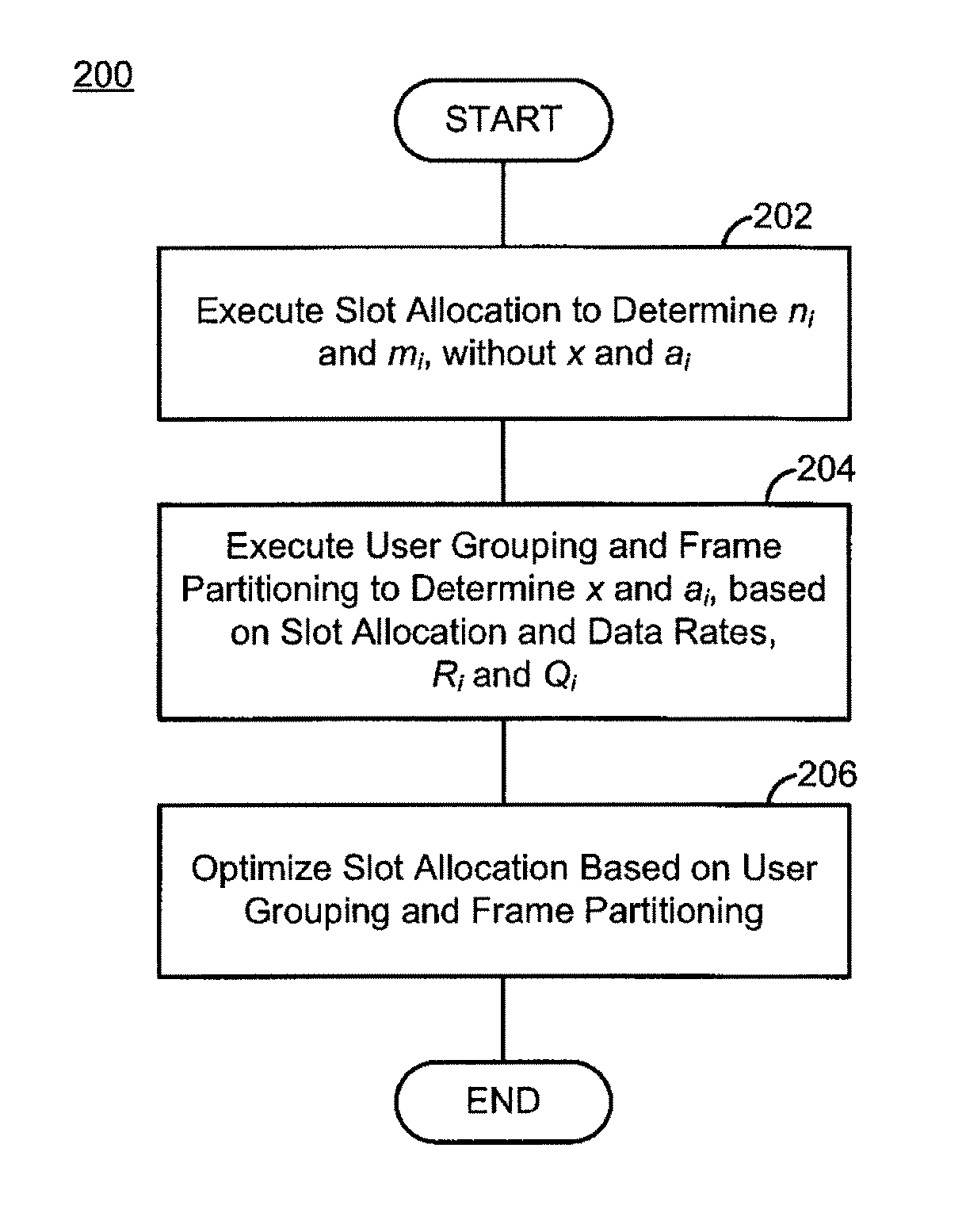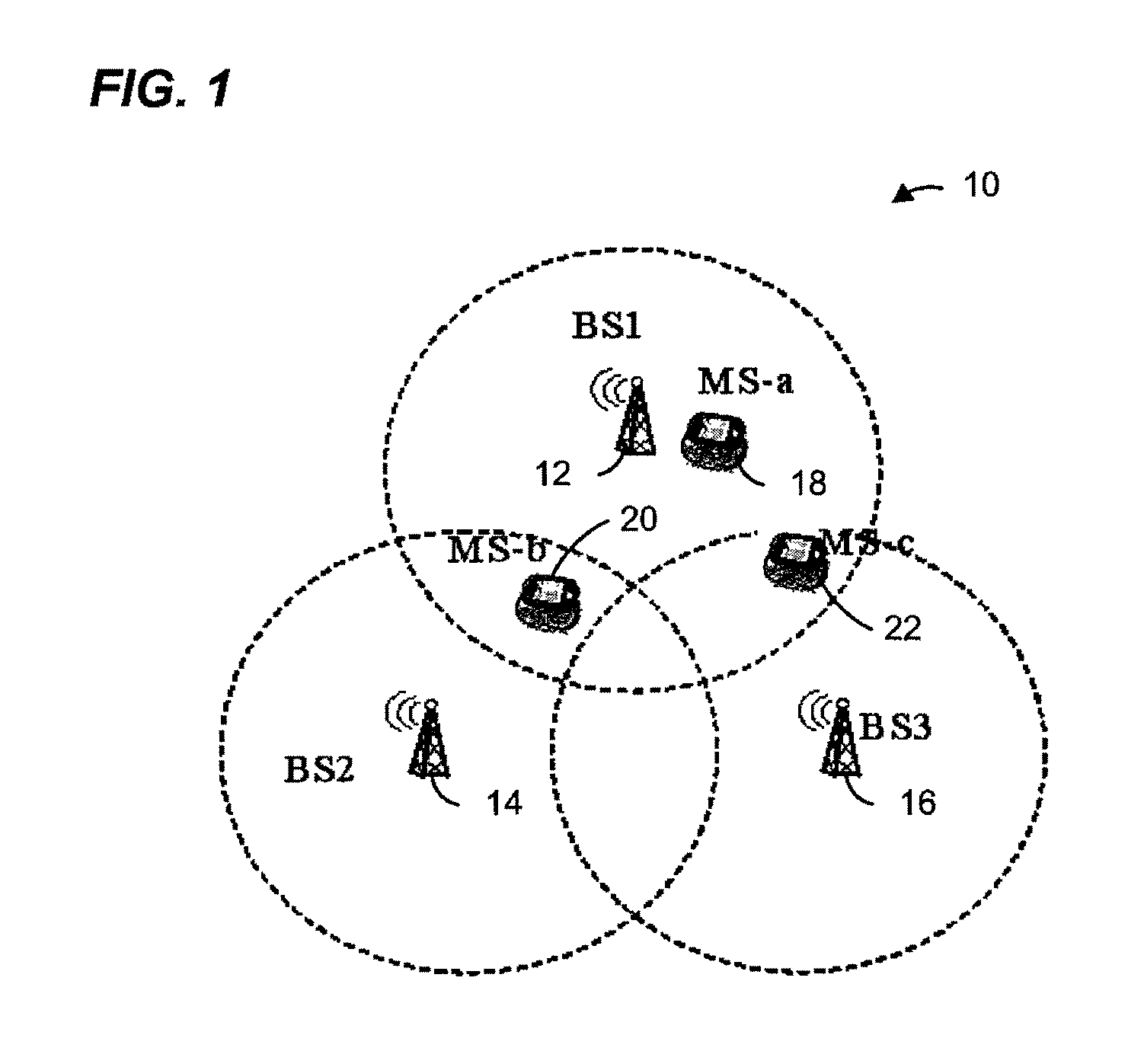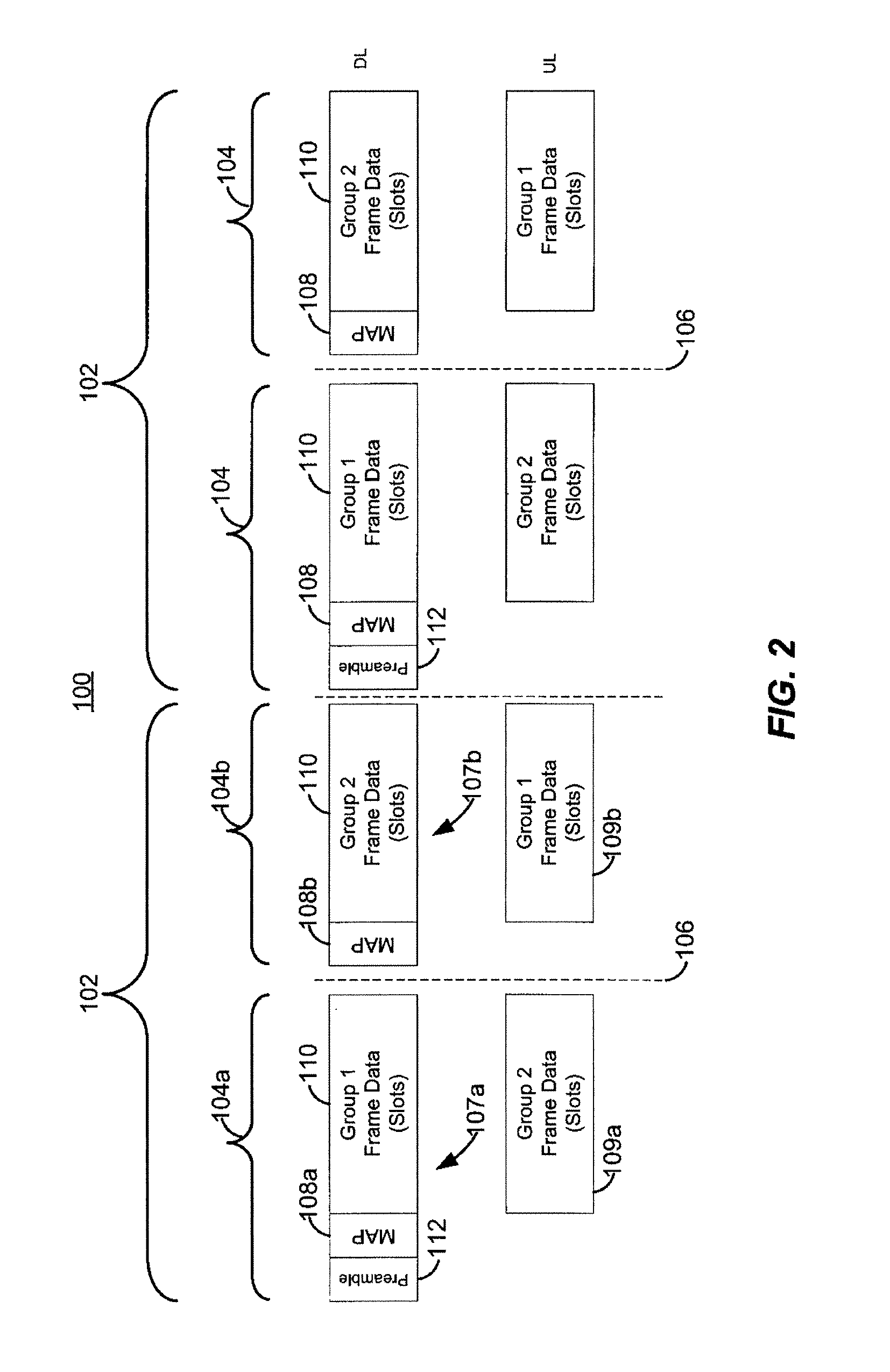Slot allocation, user grouping, and frame partition method for H-FDD systems
a frame partition and user grouping technology, applied in the field of slot-based communication schemes, to achieve the effect of maximizing system capacity
- Summary
- Abstract
- Description
- Claims
- Application Information
AI Technical Summary
Benefits of technology
Problems solved by technology
Method used
Image
Examples
Embodiment Construction
[0024]FIG. 1 depicts an example communication system 10 in connection with which slot-allocation methods and apparatus described herein may be used. More particularly, the slot-allocation techniques may be used in cellular and other communication systems and may employ the IEEE 802.16 family of communication standards or any other slot-based communication techniques to provide for communication among one or more base stations and a plurality of remote stations, which may be either fixed (i.e., stationary) or mobile stations. The example communication system 10 illustrated in FIG. 1 includes three base stations 12, 14, 16 and three remote stations 18, 20, 22.
[0025]In slot-based communication systems, such as systems employing WiMAX (WiMAX systems) as well as, more generally, cellular and other communication systems for providing voice, data, audio, and video communication, efficient operation requires careful allocation of available time and frequency resources among all remote stati...
PUM
 Login to View More
Login to View More Abstract
Description
Claims
Application Information
 Login to View More
Login to View More - R&D
- Intellectual Property
- Life Sciences
- Materials
- Tech Scout
- Unparalleled Data Quality
- Higher Quality Content
- 60% Fewer Hallucinations
Browse by: Latest US Patents, China's latest patents, Technical Efficacy Thesaurus, Application Domain, Technology Topic, Popular Technical Reports.
© 2025 PatSnap. All rights reserved.Legal|Privacy policy|Modern Slavery Act Transparency Statement|Sitemap|About US| Contact US: help@patsnap.com



